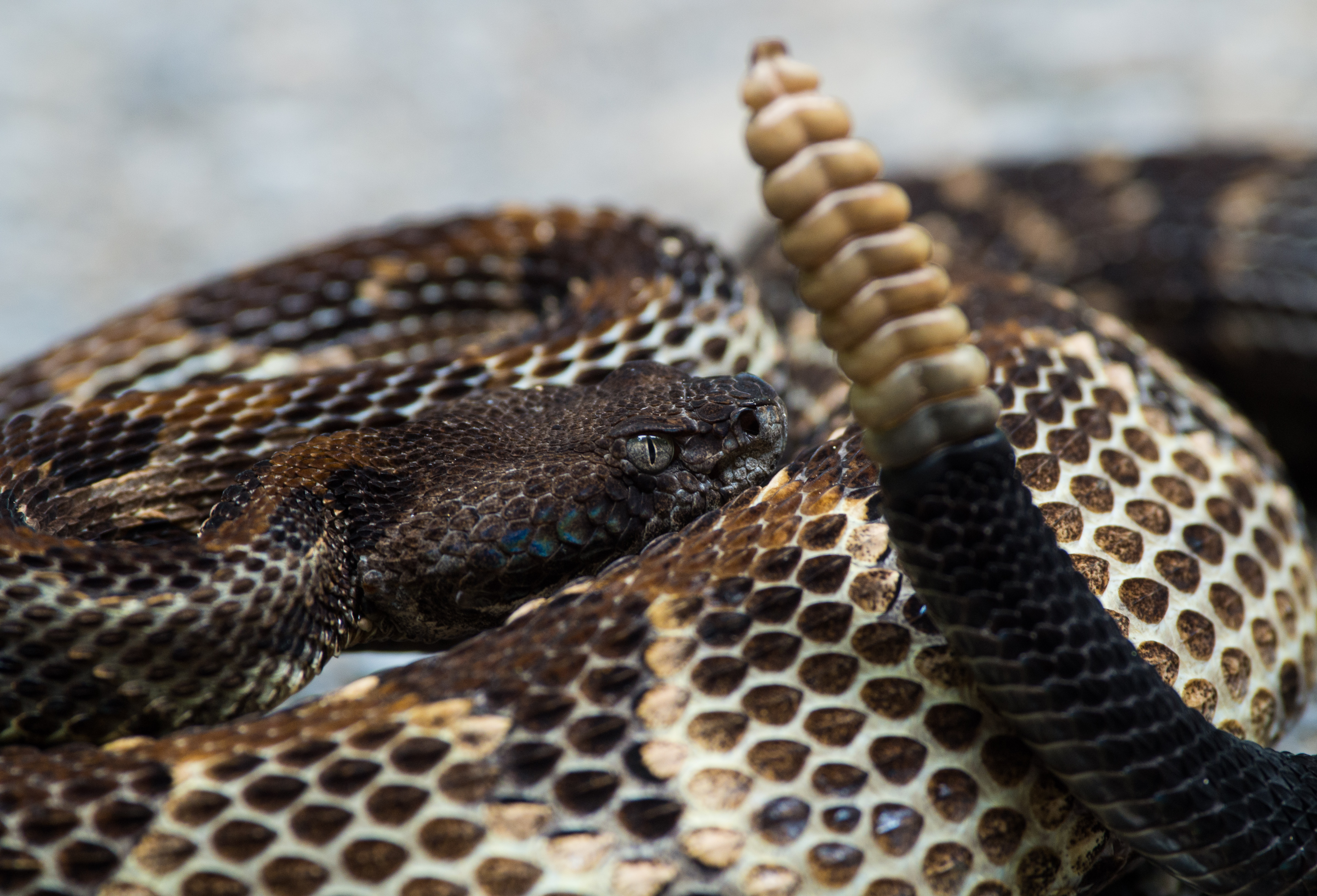For the Love of Rattlesnakes, Scrub All GPS Data from Your Nature Photos

Credit to Author: Brian Anderson| Date: Mon, 23 Oct 2017 13:00:00 +0000
This story is part of OUTER LIMITS, a Motherboard series about people, technology, and going outside. Let us be your guide.
Dr. Chris Howey, an associate professor at the University of Scranton, slid over a Post-it with the coordinates I had come for. “Turn off anything that transmits location before you visit it,” he said. “Make sure the GPS-embedding is off on your camera. And be careful.”
The coordinates were for something better than a place that sold a really, really good cup of coffee, or an illegal outdoor marijuana patch known only to stressed out, local graduate students. They led me, sweating and crawling with spiders, to a special, out-of-the-way pile of rocks that soon promised to hold a slithering congregation of venomous timber rattlesnakes preparing to den for the winter.
As a species, rattlesnakes are almost quintessentially American. Some Appalachian Christians still practice their faith by holding the serpents bare-handed. Benjamin Franklin once called the rattlesnake “a strong picture of the temper and conduct of America”, which would make sense if America was a long-lived, slow-growing, near-sighted, sociable creature that took care of its children and spent its winters underground with dozens of its neighbors.
America, however, has long had a bad relationship with this supposed mirror image of itself. As author and former Bronx Zoo zoologist Ted Levin wrote in his book on timber rattlesnake biology and conservation, early settlers would create involuntary snake suicide bombers, tying lit gunpowder to the animals and letting them into the dens. Pregnant females would be gutted, their rattles and the rattles of their unborn babies cut off for a $1 bounty. Even today, people will post gloating pictures of a beheaded snake, rattlesnake or otherwise. Some town economies are heavily based on rattlesnake roundups, where thousands of snakes are killed in front of tens of thousands of viewers.
Asking where a den is, or even a time when snakes are most active, is akin to asking someone how their mother is doing at her funeral.
This animosity has caused amateur “herpers” (short for herpetologist, a scientist who studies reptiles and amphibians) who gather online to share pictures of animals seen, to become extremely cautious when it comes to sharing location information for fear of the animals being collected for the pet trade or killed.
“Collectors certainly use Instagram, forums, and other online resources to find new populations to pillage,” wrote Melissa Amarello, co-founder of Advocates for Snake Preservation, in an email. And if we’re talking about a species that is despised, threatened, or endangered, she added, “there’s a real risk of harm to individuals and populations.”
Amarello wasn’t referring specifically to the timber rattlesnake, which is currently listed endangered in a handful of states and threatened in others, primarily in the north and northeastern US. But she might as well have been.
Nowadays, asking where a den is, or even a time when snakes are most active, is akin to asking someone how their mother is doing at her funeral. And it isn’t just amateur herpers who are becoming secretive; more and more scientists, including Howey, are taking care to obscure or even omit locations of certain species to avoid them being harassed, collected, or even killed. Apps like HerpMapper and iNaturalist automatically obscure the locations of species observed.
It’s not only exact locations that herpers are afraid of sharing. People are careful to keep recognizable landmarks out of their pictures, because they know someone determined enough could use them and other biogeographical markers to find their quarry.
“I have many pictures that will not see the light of day because it would be too easy for someone to look at it and say, ‘Hey, I know where that is,'” Howey told me over email. But despite the general sense of caution, it doesn’t seem well-known among the herping community that there might be easily-scraped GPS information in pictures they’ve eagerly shared.
“I’m familiar with the idea,” David Steen, a conservation biologist at Auburn University, wrote to me. “But I haven’t spent much time thinking about it. The possibility of inadvertently sharing location information … would definitely make me think twice about sharing pictures online.”
It made me think twice as well. As of now, sharing pictures—minus landmarks—is encouraged, but if location might still be inferred, would picture-sharing become faux pas? After some digging, I discovered that a majority of the popular social media sites automatically strip an image’s EXIF data, which includes location, as it’s being uploaded. I tested this, attempting to scrape geodata from pictures on Twitter, Facebook, and Instagram. Happily, I got nothing.
Unlike scientists who have to decide whether to publish the locations or not, you and I don’t have to worry about inadvertently harming animals by sharing a picture we took on a hike. However, change might be on the horizon. In 2016, a Berlin photographer won a lawsuit against Facebook for automatically stripping EXIF data, arguing that it violated German copyright law. Might this German-specific ruling soon have global consequences?
“From the perspective of protecting rare species, I think it is a benefit that social media sites strip information from pictures,” Steen said. “People may not even know that they are … sharing pictures of rare and sensitive species, let alone think about it enough to remove location information.”
Unfortunately, there may soon come a day when we will have to think twice about sharing pictures to protect the nature we love.
I went back to the nondescript pile of rocks a few weeks ago, backpack loaded with camera and lenses. Nothing greeted me but the faint, echoing rattle of a snake, hidden somewhere in the stone-guarded space beneath my feet. I left without a picture. I don’t regret it.
Get six of our favorite Motherboard stories every day by signing up for our newsletter.